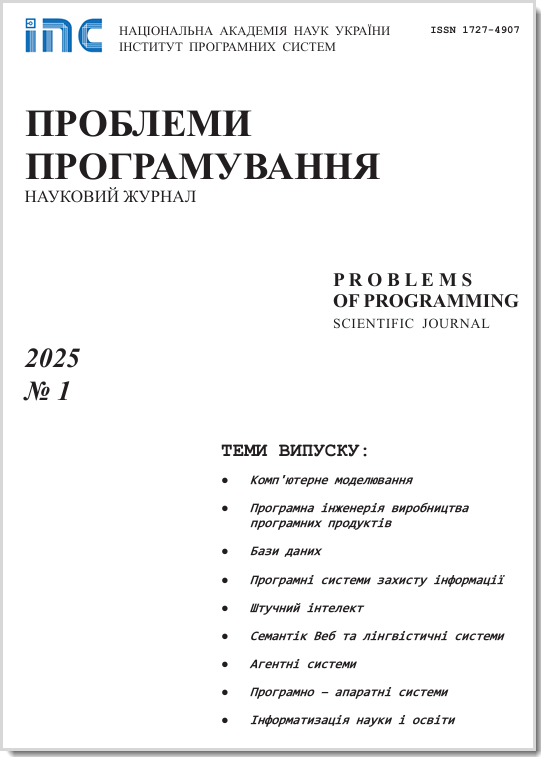A simulator of a pulsatile heart
Abstract
For IBM-compatible personal computers, a software simulator (SS) is created. SS is based on special mathematical model (MM) of human hemodynamics. MM represents the cardiovascular system (CVS) in lumped parameters and with a fixed neurohumoral background corresponding to the rest. By means of the SS the user can provide simulation scenarios including of changes in the initial state of the CVS for the calculation of the hemodynamic reactions. There are two ways to set the scenario: either from the list presented in the user interface, or from the combination of elementary procedures. In current version of the SS the atriums are absent, the cardiac activity is modeled by the description of ventricular pulsations. SS demonstrates the main regularities of the physiology of CVS in small and large circles of the circulation. SS visualizes hemodynamic transformations caused by defects of the heart valves, right / left ventricular hypofunction (due to worsening of the coronary blood flow, pathology of cardiomyocytes, myocardial hypertrophy). The hemodynamic effects caused via variations of the rate and power of contraction of the right or left ventricles were studied. It is planned to create a complex model based on MM, but taking into account the neurohumoral regulation of the heart pump, the vascular tone and blood volume. Such a complex model will be a problem-oriented information technology for the cardiologist. SS is programmed in Java.
Problems in programming 2017; 4: 098-0108Keywords
Full Text:
PDF (Русский)References
Lopshire J.C., Zipes D.P. Device therapy to modulate the autonomic nervous system to treat heart failure. Curr Cardiol Rep. 2012. 14(5). P. 593-600. CrossRef
Chatterjee N.A., Singh J.P. Novel Interven-tional Therapies to Modulate the Autonom-ic Tone in Heart Failure. JACC Heart Fail. 2015. 3(10). P. 786-802. CrossRef
Schwartz P.J., La Rovere M.T., De Ferrari G.M., Mann D.L. Circ Heart Fail. Auto-nomic modulation for the management of patients with chronic heart failure. 2015; 8(3). P. 619-628. CrossRef
Shen M.J., Zipes D.P. Interventional and device-based autonomic modulation in heart failure. Heart Fail Clin. 2015. 11(2). P. 337-348. CrossRef
Fresiello L., Ferrari G., Di Molfetta A., Zieliński K., Tzallas A., Jacobs S., et al. A cardiovascular simulator tailored for train-ing and clinical uses. J Biomed Inform 2015. 57. P. 100-112. CrossRef
Burkhoff D., Tyberg J.V. Why does pul-monary venous pressure rise after onset of LV dysfunction: a theoretical analysis. Am J Physiol 1993. 265. Р. 1819-1828. CrossRef
Smith B.W., Chase J.G., Shaw G.M., Nokes R.I. Experimentally verified minimal cardi-ovascular system model for rapid diagnos-tic assistance. Control Engineering Practice .2005. 13. Р. 1183-1193. CrossRef
Paeme K., Moorhead K.T., Chase J.G., Lambermont B., Kolh P., D'orio V., Pierard L., Moonen M., Lancellotti P., Dauby P. C., Desaive T. Mathematical multi-scale mod-el of the cardiovascular system including mitral valve dynamics. Application to ischemic mitral insufficiency. BioMedical Engineering OnLine 2011, 10: 86. CrossRef
Acton A. Advances in Heart Research and Application: 2013 Scolarly Edition, Atlanta (Georgia), USA: 424 p.
Grygoryan R.D. The Energy Basis of Re-versible Adaptation. New York, USA: No-va Science, 2012. 253 p.
Grygoryan R.D. The Optimal Circulation: Cells' Contribution to Arterial Pressure. New York, USA: Nova Science, 2017. 287 p.
Grygoryan R.D., Sagach V.F. The concept of physiological supersystems: a new stage of integrative physiology. Fiziol. Zh. 2017. 63(3): P. 58-67. CrossRef
Grygoryan R.D., Lissov P.N. A software simulator of human cardiovascular system based on its mathematical model. Problems in programming. 2004. N 4. P. 100-111.
Bers D.M. Excitation-Contraction Coupling and Cardiac Contractile Force. Kluwer Academic Publishers, 2002. 452 p. CrossRef
Mynard J.P., Davidson M.R., Penny D.J., Smolich J.J. A simple, versatile valve mod-el for use in lumped parameter and one-dimensional cardiovascular models. Int J Number Methods Biomed Eng. 2012. 28. P. 626-641. CrossRef
Avolio A.P. Multi-branched model of the human arterial system. Med Biol Eng Com-put. 1980. 18. P. 709-718. CrossRef
Heldt T., Mukkamala R., Moody G.B., Mark R.G. CVSim: an open-source cardio-vascular simulator for teaching and re-search. Open Pacing Electrophysiol Ther J. 2010. 3. P. 45-54.
van Meurs W. Modeling and simulation in biomedical engineering: applications in cardiorespiratory physiology. 1st ed. McGraw-Hill Education; 2011.
Mateják M, Kulhánek T, Šilar J, Privitzer P, Ježek F, Kofránek J. Physiolibrary - Mod-elica library for physiology. 10th International Modelica conference; 2014. CrossRef
Hann C.E., Chase J.G., Shaw G.M. Effi-cient implementation of non-linear valve law and ventricular interaction dynamics in the minimal cardiac model. Comput Methods Programs Biomed. 2005. 80. P. 65-74. CrossRef
DOI: https://doi.org/10.15407/pp2017.04.098
Refbacks
- There are currently no refbacks.



